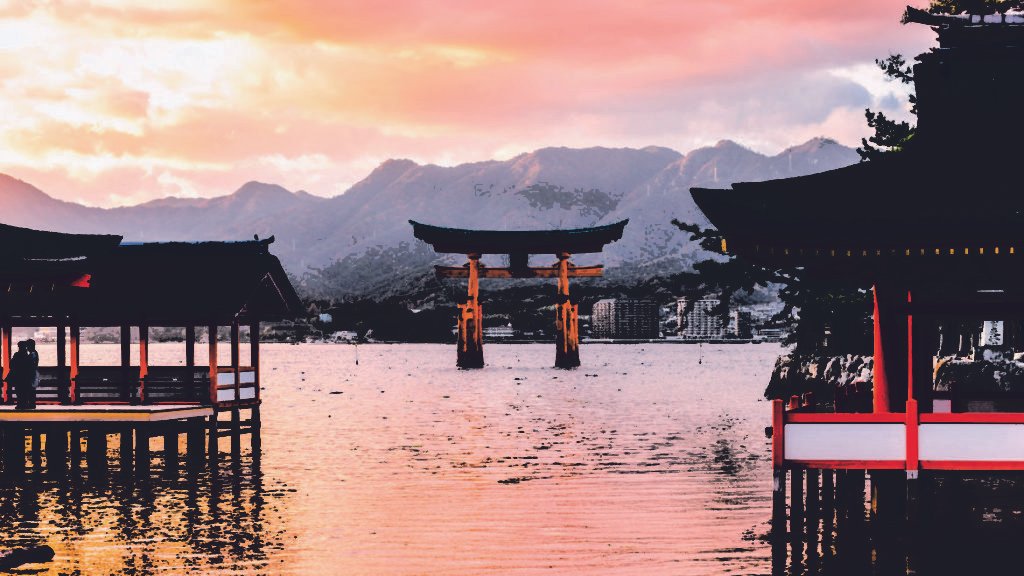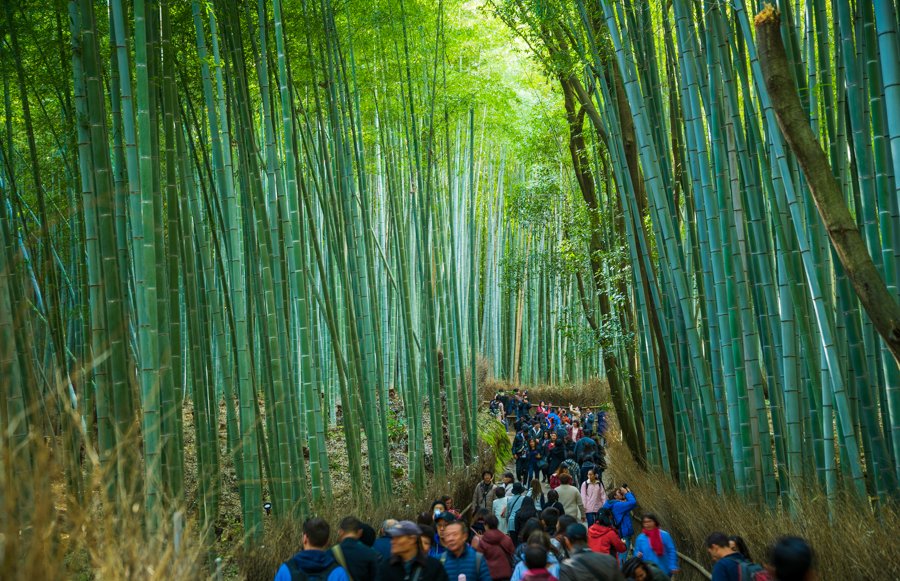Travel experiences are some of the most memorable ones. People trot across the globe every second of the day. Whether it is for fun or for work, there is always a backlog of planning that goes into making a travel experience a successful and memorable one. Travelers have to decide first which continent to visit, then which country, then which cities, and finally, which eye-catching areas or restaurants to visit.
The reasons for traveling are plentiful, but one of the main reasons why people travel is to explore the culture, technology and people of a new place.
Japan is one such place for mind-blowing experiences as it is the perfect mix of an amazingly unique culture, advanced technology and high-quality hospitality. For many, visiting new places is often not the issue, the problem is deciding which places to get the most immersive experiences.
When it comes to immersive experiences, Japan is the country to get them all, plus so much more. When you think about Japan, it wouldn’t be out of place to think about a place of endless discoveries, especially for first-timers. One could spend a lifetime trying to visit all the cool places in Japan and will not even come close to finishing. When in Japan, you can seamlessly move from very technological advanced scenes to sacred Shinto shrines, to extremely diverse art forms, to uniquely preserved cultural icons, to amazing landscapes, to preciously styled Buddhist temples and to infinitely more breathtaking experiences.
The big question remains though. Where do you visit when in Japan? Well, this article aims to help you focus on the memorable experiences instead of the frustrations that comes with visiting a new place. This article will be the first of a series of articles about must-see places in Japan. In each, we will talk about ten (10) amazing places to visit. These guides will help you streamline your journey and have you living like a local.
Here goes the first ten places to visit!
Mount Fuji
Sometimes when people think about Japan, the first thing that comes to mind is Mount Fuji. One could even argue that Mount Fuji is the most known Japanese monument. Until another drastic volcano creates a higher mountain, Fuji remains the highest mountain in Japan. Whether you are standing close to it or far from it, the Mount does look spectacular.
However, it is always best to behold its magnificence from close range and one of the best spots to do that is at the Chureito Pagoda. This is one of the most visited spots in Japan, not only because of the Mount Fuji but also because of its breathtaking landscape. Even if you have never been to Japan, you may have seen a photo of Chureito Pagoda across your social media sites, especially on Instagram.
Standing at Chureito Pagoda, you get to enjoy a couple of amazing views. This spot overlooks the city of Fujiyoshida with Mount Fuji as the perfect backdrop motif. More so, if you visit during mid-April, then the cherry blossoms are an incredibly delightful sight to behold. The first half of November is actually the best time to go see the mountain from Chureito because the skies are clear and you are sure to get a colorful view while taking amazing photos.



Viewing Mount Fuji from Chureito Pagoda
Fushimi Inari Shrine in Kyoto
Every traveler needs an itinerary, and when visiting Japan, yours is sure to be full. Another well-known place to visit is Fushimi Inari Shrine in Kyoto, the capital city of Japan. This is one of the most crowded shrines in Kyoto, so it pays off to visit really early in the day. There is no entrance fee for this shrine and it is open all day. The shrine doesn’t get too busy until 9 am so choosing times between 6 am – 8 am will be best.
Now, this is the cool stuff. Shinto is a traditional religion of Japan that aims to establish connections between present-day Japan and its ancient past, and the Fushimi Inari shrine is one of its icons. To make the best out of a visit to this spot, try to get a view of Kyoto’s landscape by following the trail all the way up to the mountain. From there you can take cool photos of the city line and the orange torii gates.

The Entrance of Fushima Shrine 

Torii gates in Fushimi Inari Shrine, Kyoto, Japan
Shibuya
For our number three spot, we are still in Tokyo! You can not tell someone you have visited Tokyo without going through the intersected scramble crossing just by Shibuya Station. A fun fact about this place is that an average of 2.8 million people walks across this road on any given workday. It is like the hipster capital of Japan. The Center Gai Street is also located around this area and houses a good number of incredible fashion stores.
This crossing is especially perfect for that tourist selfie of yourself in the midst of all the madness, but make sure you obey the traffic lights. Excitingly, Shibuya 109 shopping mall is just a couple of minutes from the station. This is the usual shopping destination for a lot of visitors and you definitely won’t be out of place if you find yourself here.

The Scramble Crossing of Shibuya 
An Aerial View of Shibuya Center 
The Famous Center Gai Shopping Street
Kabukicho
Kabuchiko gets its name from the Kabuki theatre, which was built in the era during the aftermath of the second world war. Since that time, Kabukicho has evolved into one of Japan’s biggest red-light districts and is a haven for numerous drinking spots, funky hostess/host clubs, and other novel adult diversions.
Shinjuku is a new sensational VR zone and is located in the area. This offers visitors various opportunities to play and fulfill all kinds of fantasies. This area also houses the infamous Robot Restaurant that has now become a go-to spot for visitors.

Kabukicho Night Life 

Robot Restaurant
Shirakawa-go
Moving away from Tokyo, Shirakawa-go is located in the high mountains of central Japan. This place is very unique because you get a completely different feeling from what you would normally get from other parts of Japan. Historically, Shirakawa-go was cut-off from mainland Japan, hence, it has a unique design and architecture. Also, the winter here is colder than most places in Japan, and due to very heavy snowfalls, Shirakawa-go residents actually build their houses with very steep roofs.
A cool fun fact about this place is that it has been declared a World Heritage Site because of its cultural value and prominence. But even without that title you’d be sure to enjoy the ambience of this wonderfully crafted place by nature and by man. When you visit today, you’ll still see lots of these traditional gassho-zukuri farmhouses. They are so charming with their rustic wooden frames and thatched roofs. In winter, snow covers them and the whole village looks extraordinary as it tangles unendingly between rice paddies and mountain ranges.

Shirakawa-go in the Winter. 
A typical Shirakwa-go house with a steep roof.
Ueno Park
Most visitors to Japan are only there for a day or two. But if you will be visiting and staying in Japan for more than a couple of days, then Ueno Park is quite the spot to check out. This park proffers almost all the solutions to any eye-catching fantasy. For instance, there is the Ameyo Yokocho shopping bazaar that showcases what remains of an ancient black market. Plus there are plenty of other attractions that allow visitors to explore some of the most charming aesthetics of Japanese culture.
Just like an offshoot, Yanaka is situated right next to the park. Another fun fact is that Yanaka remains one of the very few places to actually survive the destructive nature of World War II. Hence, just like the Fushimi Shrine, it helps visitors seamlessly connect Japan’s past and present.
Yokohama
Now moving to the South of Tokyo is Yokohama, the city that is unlike Tokyo. Tokyo can be very fast-paced for visitors, sometimes because of its status as a high-tech, business, and tourist zone, but sometimes, visitors are looking for a more relaxing and slow-paced experience in a big city and Yokohama offers just that. Yokohama China Town, one of the world’s biggest, is inarguably the main spot for visitors who do come here. If not, then exploring the Minato Mirai waterfront is probably the next best option. Sometimes, even if you don’t visit these places, just walking around the city gives you a very refreshing experience in a more relaxed atmosphere.

Yokohama, Japan skyline at night. 
Yokohama plans on getting aerial gondolas ahead of Tokyo 2020
Miyajima Island
Let’s start with the fact that this is a UNESCO World Heritage site. For visitors clamoring for an adventure, this is the spot to visit as it is only accessible by boat. A well-deserved nickname for Miyajima is the “Island of Gods” because it is one of Japan’s most beautiful sites. Here visitors get to explore a range of natural scenes from the deep blue sea to the green forest of Mount Misen to the aesthetic designs of numerous temples.
Speaking of temples, one you don’t want to miss is the Itsukushima Shrine. The torii gate entrance to the shrine is expertly designed to stand above the water and is one of the most photographed torii gates in the whole of Japan. At low tide periods, you may be able to walk right up to the gate, but at high tide periods, the gate looks as though it is hanging in the air. More importantly, with white-tailed deers all over the place, be careful with your food, stuff, and selfies.

Grounds of the Iksukushima Shrine 
The famous torii gate of Miyajima Island 
Be wary of these endearing deers too!
Hitsujiyama Park
Cherry blossoms, cherry blossoms, cherry blossoms. That’s not an error, another name for Japan might as well be cherry blossoms. Don’t take my word for it though. If you want your heart to be in the right place, then you must visit Japan in the cherry blossom season between late April and early May.
Shibazakura Hill in Hitsujiyama Park contains nine different types of 400,000 trees and you already know what this means. Coupled with Mount Buko in the horizontal back, you are bound to leave this place with stunning pictures to share with family and friends.

An aerial view of Hitsujiyama Park 
The Hitsujiyama park is such a delightful experience for visitors
Arashiyama Bamboo Grove in Kyoto
Last but not least, in this article, this is a very small Bamboo groove that will be most enjoyed if you were here by yourself. It’s possible to access Arashiyama from the Main Street, which is located north of the entrance to the Tenryu-Ji Temple. It’s not really necessary to book a tour since it’s so small and easily accessible. Access to Arashiyama Bamboo Grove is also completely free.

Tourists walking along the bamboo groove.. 
The Arashiyama bamboo groove early in the day without people
We have come to the end of the first part of this series of articles about places you must visit in Japan. More articles will follow with more diverse places.
There is more to come so check back later.



